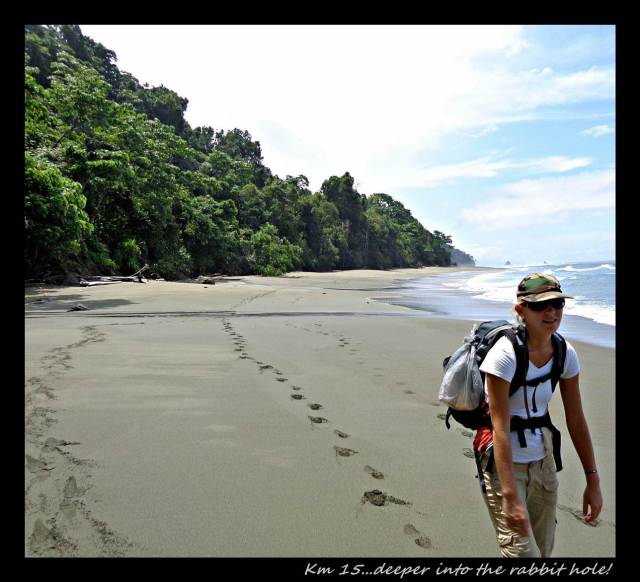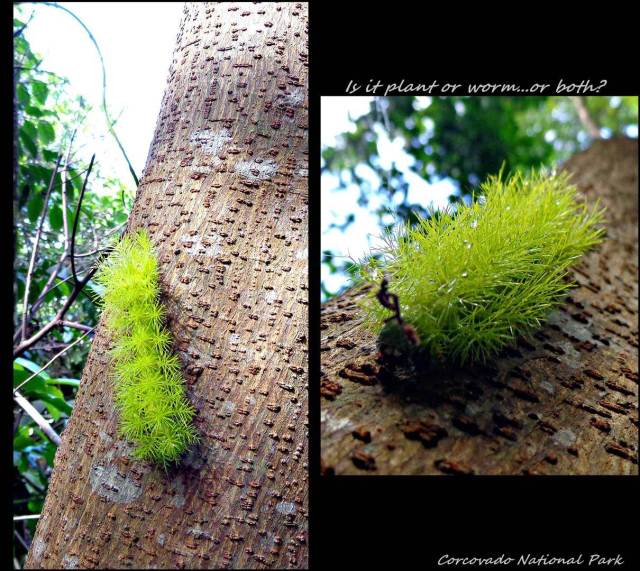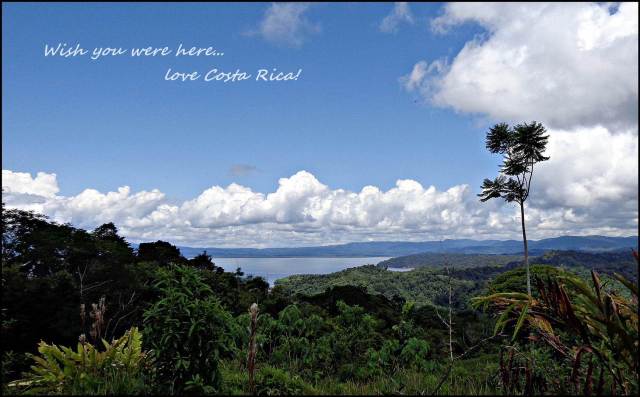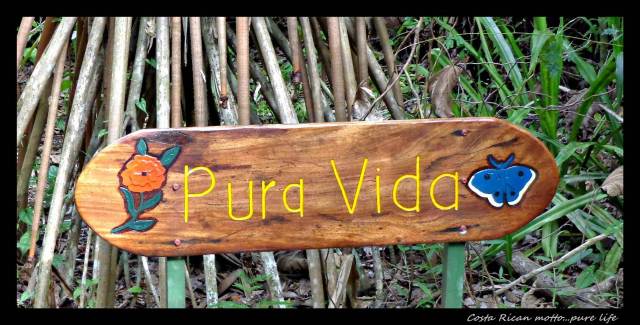25 June 2013
Costa Rica started out with a bang…a bang of probable Dengue fever for Marius and a nasty stomach flu for me. Poor Marius’s dangerously high fever started while waiting in line at immigration and got progressively worse from that point further. Incidentally, crossing the Costa Rica border also took longer than any other border so far…just as Mr. Murphy like it! We stopped in the first town we drove through and was lucky to find the worst hotel yet. Given we took a cheaper room, I guess I can’t blame the Dutch owner for shoving the old, sagging excuse for a mattress on cheap plywood d-i-y beds and releasing bedbugs on it until the population was saturated. Let’s just say, I think Marius’s terrible fever probably saved him from feeling the wrath of that damn bed. I searched for possible answers about the illness, but all websites had no cures and basically recommend lots of sleep and water. Similar to the Ebola virus, this hemorrhagic fever, caused by the bite of a daytime mosquito, resembles flu-like symptoms, but is characterized by an abnormally high fever (potentially 40degC) and can in a small percentage of the cases cause damage to your vascular system. Being the superhero he is though, after only a half-days’ rest, he bravely got out of bed and we ventured further into the country.
We headed to the northern Nicoya peninsula and arrived there just in time for my stomach flu. The area was beautiful and on-touched with wildlife all around…well the parts I remember. In fact, the area is so remote that most of the roads were still gravel, and because we were very much in the rainy season, they were muddy with more rivercrossings than bridges. At some point we were stuck between two rivers and had to drive gorgeous detours to try and get to the next small coastal town. Mal Pais was one of these small towns and we found ourselves stuck next to the most beautiful ocean view on the property of an ex Costa Rican football star. The creatures on his property was unbelievable…at any given time you could comb the lawn and find iguanas in varying shapes and colors, rust-coloured bushy-tailed squirrels and colourful birds you would only expect in zoos. At dusk the howler monkeys would fill your ears with their arduous sounds and at dawn the clumsy parrots would wake you their continuous squawks while trying to fly. If it wasn’t for the cold showers, we would have thought we were in paradise!
After crossing the Friendship bridge sponsored by Korea, we headed for one of the numerous volcanoes that runs down Central America from Guatemala to Panama. After our mishap in Nicaragua, we were happy to hear about no less than two volcanoes which had roads going all the way to the top, a volcano with a turquoise river surrounding it and another smoking volcano with a lake at its foothills. Our first stop was the truly turquoise waters of the Rio Celeste which runs through Parque National Volcan Tenorio. Most claims of river colors usually disappoint, but more turquoise and gorgeous this river could not have been! They say that when God finished painting the sky blue, he washed his paintbrushes in the Rio Celeste, and we couldn’t agree more. A series of muddy trails, and one steep and slippery staircase lead to aquamarine lagoons and waterfalls finally ending at the confluence of two rivers, one whitish and one brown, which mix together to create the heavenly Rio Celeste. We have to say, Volcan Tenorio is really a sorry second best feature compared to the river…in fact, we weren’t even sure where the volcano was.
Our next volcano stop was Volcan Arenal which was dormant from AD1500 until one winter afternoon in 1968 when it blew resulting in lava flows that destroyed three villages, 80 people and 45 000 cattle. Since then, Arenal have produced ash columns, explosions and streams of glowing lava almost daily. Local industry rose and countless lodges and tour companies shot up until all volcanic activity came to an abrupt stop in 2010 leaving behind numerous abandoned hotels, restaurants and other tourist orientated facilities. In the foothills of this picture-perfect conical shape lies the Laguna Arenal, which at 88-sq km is the largest lake in Costa Rica. During its construction, a number of small towns were destroyed or relocated and now the lake supplies water for one of the large towns in the vicinity as well as producing hydroelectricity to the region. Besides for all the laguna provides the area, the views around the lake is beautiful and its no wonder that there is a large proportion of gringos that have moved into the area.
We had slightly higher expectations of the final volcano as this was where we could peak into the volcanic crater which in this case had an ice-blue lagoon in the centre. It is still very much active and between 1953 and 1955 there were a series of eruptions. The lagoon measures 4330 ft in diameter, is 131 ft deep, is rich in sulfur and acids which fumes when in contact with oxygen which makes seeing the lagoon almost impossible. A second trail lined with cloud forest vegetation including bromeliads, ferns and giant leaves known as the poor man’s umbrella, leads you to the old crater which is filled with water. The whole outing was almost as exciting as my writing about it and so we found the experience overpriced and slightly disappointing. Anyway, at that point we decided that we had done and seen more than enough volcanoes for one lifetime and we could now drive past the next raging giant without feeling that we will miss something.
After driving almost the entire length of Costa Rica in a single day, we got to the ocean town Uvita after some harsh rain and countless winding mountain passes. Another laid-back ocean town with a nice beach area kept us occupied for two days before we headed to the ultimate Costa Rica destination. Corcovado national Park.
Occupying the largest part of the southern peninsula on the pacific side of Costa Rica, Corcovado National Park is famously labeled by National Geographic as the “most biologically intense place on earth” and is the last tract of tropical rainforest on the Pacific Central America. Creatures here include the largest population of scarlet macaws in Costa Rica, Baird’s tapirs (endangered mammal apparently related to hippos), giant anteaters, jaguars, ocelots, collard peccary (similar to a warthog) and four types of monkey: white-faced chapuchin, red tailed squirrel monkeys, howler monkeys and spider monkeys. That is not counting the thousands of species of insects and reptiles found throughout the park. A large contributing factor to this intact ecosystem is the fact that you can only get there by plane or by foot. As flying in is for sissies, we decided to walk the 22km into the park to the Sirena Ranger station. The park tourist activity is very well monitored and before you just arrive at the gate you have to report to the park office located in the small town of Puerto Jimenez where you pay your entry as well as your camping fees. I couldn’t help thinking…we’re walking 22km and we have to pay them! Anyway, we got to Puerto Jimenez which already felt like a world away from civilization and was really lucky to find a great campsite that some other overlanders had posted on their site. It is located right next to the light aircraft runway, but you wouldn’t really know it from the lush vegetation and countless numbers of scarlet macaws surrounding you. Despite hearing their squawks constantly, you could look up into any tree and see a pair of masterfully painted red-blue and yellow parrots staring as curiously at you as you are at them. The curiousity lasts only until another pair of macaws spitefully position themselves on that same branch ensuing in a flurry of screeches and fluttering wings until one pair flies off in disgust. After seeing a few of these encounters, we concluded that scartlet macaws must be Italian! What was worst however was for the first time realizing how completely out of character these birds are when caged as some trophy in someones home. For one, you never see them alone, they each have their special partner and where one goes the other one does too. We also saw them fly for quite some distances and their favorite pastime seemed to be ruining all the almond trees in the area. It should really make you think twice before you put them in a cage alone. Our friendly host Adonis do not only have these beautiful birds in his garden, but also tucans and other smaller parrots, as well as squirrel monkeys and giant iguanas. His pride and joy however, is his crocodiles which he feeds every few days and is more than eager to take you on a tour to go see them.
After our already rather wild experience at Adonis’s place, we left for Carate which lies two kilometers from the park’s entrance gate. Here, nothing civilization hasn’t reached and except for a few exclusive lodges and a small shop, the place is pretty much deserted. We slept on the beach that night and the next morning at 6am we started the 22km hike from Carate to Sirena Ranger station. The first two kilometers were on the beach, and within the first kilometer I was already ready to quit when a wave caught me off guard drowning my shoe in sticky seawater. My backpack was hurting, shoe wet and resilience failing…and then we reached the entrance gate! Our biggest obstacle (except for my bad mood) was the fact that you needed to cross a rather large river at least two hours before high-tide otherwise it is too high to walk through and you stand a very real chance of getting eaten by bullsharks that feed in the rivermouth or crocodiles living in the river. No big deal, right? Unless the river is located at kilometer 21 and high tide is at 15h50. Let me do the math for you, we had 7h50 min to walk 21 kms which was either on the beach or through virgin jungle while carrying all our food for two days, a tent, matresses and clothes for all types of weather. It might seem licxke no big deal for someone who actually hikes once in while, but for two (one more than the other) lazy South Africans it was tough!
All the moaning aside, it was one of the most awesome experiences ever. They warn you that the most dangerous thing you could encounter is a pack of pigs, more specifically peccary, that can live in groups of up to 200! They advise you to look out (or rather smell-out?) for the smell of onion which usually accompany these herds, and if you do catch a wiff, to run and climb the nearest tree. Lucky for us we didn’t cross their paths as I for one would definitely have been a victim of the charging swine seeing that even lifting my arms was more movement than I could handle at some stages. Although no peccary, we were lucky to spot various mammals, insects and reptiles. Among others, interesting encounters was the spider monkeys that followed us for a while and then threw us with their feces, the white-faced chapuchin monkeys which is impossible to photograph, the giant anteater that didn’t even know we existed, a surfing crocodile, the moss-covered worm/ worm-like mossplant, the numerous metallic blue morpho butterflies and the ever present scalet macaws that was pretty much the only bird you saw. We reached the problem river just before 13h00 that afternoon after what felt like the longest day of my life. I don’t know how Marius did it carrying a bag that was twice as heavy as mine and furthermore figuratively carrying me through the whole day! Although the water was coming in fast, we crossed Rio Claro at hip-depth only and seeing that I am still writing this, we are happy to report that there were no bullsharks or crocodiles. At the station we didn’t see more animals than we did walking there and back, and we were happy we didn’t fly in to the ranger station as we are sure a lot of those people don’t see half of what we did. No pain, no pleasure I guess. We stayed at the station for one day and then had the pleasure of walking all the way back to Carate, which I have to say was just hard as walking there! All and all, a must-do experience if you’re ever in Costa Rica.
We found Costa Rica a few steps above all of the countries in central America we have visited. It’s seems that the people here know the beauty that they have in their small piece of Earth and they are respecting and protecting it. Nowhere has the grass been so lush and green, the sky so blue and the wildlife so all around us. So maybe the petrol/gasoline costs a fortune (U$1,50/litre) and the food prices are much higher than other central American countries, but the infrastructure is miles ahead of the rest. If we had to choose a country in central America that would take first place, we’d choose the coast translated as rich/delicious/tasty/lovely/pretty (Costa Rica) and we are sure the residents there would agree wholeheartedly. As their motto say: Pura Vida (pure life)!
















































